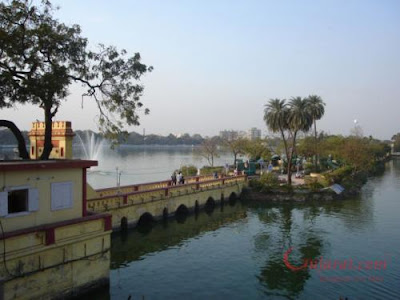When you visit Ahmedabad City you will find Jhulta Minar. This is an extraordinary structure. Jhulta Minara is part of the mosque of Siddi Bashir. It is a swaying manarets. It swayed by applying a little force at the peak of the arch. One part of minarets was demolished by and Englisman in his attempt to untravel the mystery of the swaying minarets. The mosque was built by a master craftsmen and the crucial mechanism that causes the shaking is still a mystery. The minars stand the test of the rumbling trains that passes through.
photo courtesy: gujarati guide online

.jpg)

